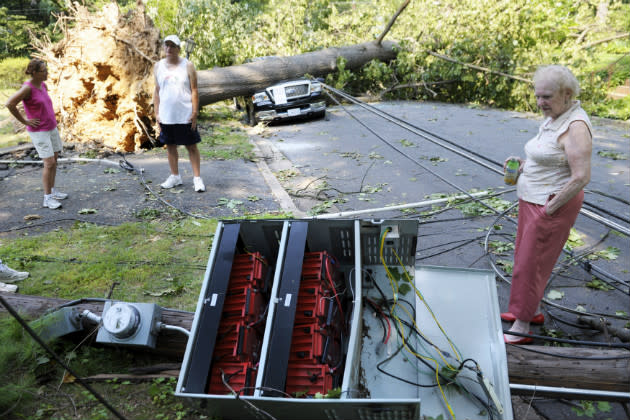 The Lookout
The LookoutHeat wave: For millions without power, little relief

A heat wave continued to scorch the eastern half of the United States on Monday, as more than 2.2 million customers remain without power following the deadly "super derecho" storm that ripped through the nation's midsection over the weekend, killing at least 15 people.
While the triple-digit temperatures that baked the region are gone, "hot and hotter will continue to be the story from the Plains to the Atlantic Coast the next few days," the National Weather Service said Monday. "The widespread excessive heat warnings and heat advisories have certainly decreased in coverage, but temperatures will remain well above average across a large portion of the U.S."
At least 18 states remain under heat excessive heat warnings or advisories, as above-normal temperatures continue to affect a large portion of the country, with high temperatures in the mid-to-upper 90s and above.
[Slideshow: Heat wave bakes U.S.]
Nearly a million customers remain without power in Virginia, Maryland and Washington, including 225,000 in the D.C. metro area. According to electrical companies, it could be several more days before power is fully restored.
"We've restored about 45 percent of the customers, but obviously, we're not satisfied," Pepco chief Joe Rigby told CNN early Monday. "We have a lot of work to do, and we won't be satisfied until we have everyone back."
In Washington, nonemergency federal workers were told they could work from home, and the Washington Post published a list of "cooling centers" for sweltering, powerless readers.
[Also read: Extreme heat + millions without power = dangerous situation]
Since June 24, more than 1,900 heat records were broken in the United States.
In Atlanta, it was a record 106 degrees on Saturday. On Sunday, it was 105.
It was so hot (107 degrees) in Nashville, a woman baked cookies on the dashboard of her car.
[Slideshow: Millions without power]
States of emergency have been declared in Ohio, Maryland, Washington, West Virginia and Virginia, where 10 people died from the storm.
"This is not a one-day situation," Virginia Gov. Bob McDonnell said. "It is a multi-day challenge."
According to Reuters, three people died in North Carolina on Sunday, as thunderstorms and high winds walloped the state. More strong storms were possible in the mid-Atlantic on Monday, according to the National Weather Service.

